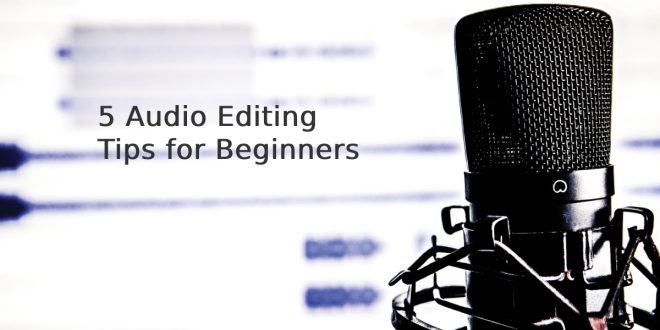Do you aspire to become a successful DJ, producer, or audio editor?
Professional audio engineering can be an enjoyable career, but you have to learn how to use the tools. If you are just starting and need some editing audio tips, keep reading to learn more. We’ll cover common equipment, industry trends, and editing basics.
This simple guide can give you a head start and help you get to know audio editing better.

1. Setting Up an Audio Editing Software
Download the software, install it, and then become familiar with the interface and the different tools. With most audio editing software, you can record, edit, and mix audio, so make sure you’re aware of these capabilities.
Also, check out any tutorials and documentation associated with the software so you can better understand the features available. After this, start by playing around with the interface and try out your audio editing skills first with simple audio recordings before tackling something more complex.
2. Establishing a Basic Audio Workflow
A few essential tips to consider when establishing a basic audio workflow include having a dedicated workspace to reduce distraction and optimize concentration. Additionally, getting familiar with the key shortcuts will save time, as you can quickly navigate through your work.
It’s also beneficial to choose a digital audio workstation (DAW) of your choice and familiarize yourself with it as you work and refine your audio. Taking regular breaks can help restore focus and concentration and set aside time for reflection to ensure you’re staying on track.
3. Enhancing Audio Quality
Start by introducing a bit of high-frequency compression to add clarity, as well as some low-level compression to even out any loud and low peaks. Use EQ to remove any unwanted frequencies that could potentially be detracting from the audio.
Try adding a light reverb to help create a more expansive sound. Use a limiter to maintain optimum dynamic range and keep the audio peak level consistent. If the podcast is still lacking in clarity or warmth, consider using a milder saturation to add a bit of both or hire audio visual consultants.
4. Utilizing Audio Editing Tools
Start by learning how to control gain levels and adjust audio levels, setting a comfortable volume range for the entire track and individual elements. Experiment with various effects such as EQ, compression, and reverb to create interesting sounds and add depth to the overall mix. Try using filters to remove background noise, hums, and buzzes.
5. Enhancing the Mix Through Automation
Automation allows you to adjust sound levels such as volume, panning, effects, and other variables based on the structure of the mix. Automation can be applied to different elements within a mix to adjust the levels throughout a song or project.
Beginners can use automation by first listening to their mix and making a note of any areas that need improvement. Once identified, they can apply audio to that specific section or element within the mix to make the changes they want.
Read More About Audio Editing
Overall, audio editing can be complicated for a beginner, but sticking to the basics can help make a seamless transition into this exciting career. Professional audio editors need detailed knowledge and skills to be successful, so start with basic tutorials and practice to get a good grip on this field.
Remember to always ask questions, read tutorials, and practice regularly to become proficient in editing audio. If you’re interested in learning more, click the link to continue reading.
Did you find this article helpful? Check out the rest of our blog for more!
 Blogging Heros
Blogging Heros




